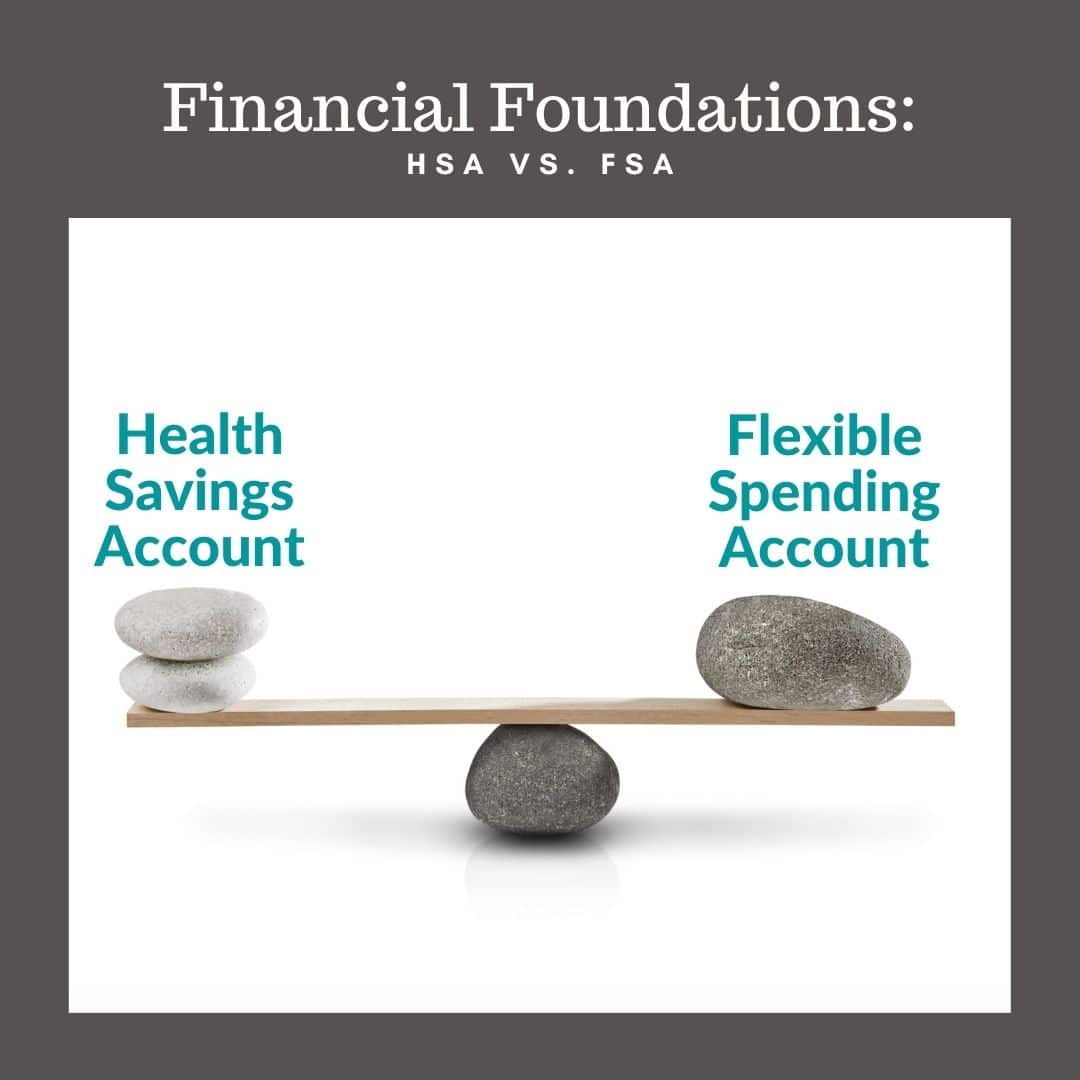Many employers offer either a Flexible Spending Account (FSA) or a Health Savings Account (HSA) as a benefit to their employees. Before enrolling in either type of plan, make sure you understand the benefits, drawbacks, and differences of each.
First, the benefits: Both an FSA and an HSA offer employees the opportunity to use pre-tax dollars to pay for qualified medical expenses. By “pre-tax dollars” we mean that money is taken out of your paycheck before any income or payroll taxes are paid. This money, in turn, can be used to pay for qualified medical expenses without ever being taxed.
To illustrate the tax savings, suppose you have $2,000 per year in qualified medical expenses. Through the normal payroll, that $2,000 may have been taxed at 15% for federal, 4% for state, 1.45% for Medicare, and 6.2% for Social Security taxes, totaling 26.65%. In short, you would have had to pay $533 in taxes in this example, thus receiving only $1,467. But by utilizing salary deferral into an FSA or HSA, you would have $2,000 deposited into the account and that entire $2,000 could be used tax-free for qualified medical expenses. That’s a huge tax savings!
Now, the drawbacks: Only qualified expenses will be eligible for reimbursement. Qualified medical expenses include medical co-pays, prescriptions, health care, dental or vision expenses for you, your spouse, or eligible dependents. Be sure to check the most current list of covered expenses to see if they qualify for reimbursement. This link lists many of the common IRS-qualified medical and dependent care eligible expenses that are covered.
Neither account allows you to use the funds for insurance premium payments, gym memberships, or cosmetic surgery. Before you determine how much money to defer from your paycheck into either account, make sure you understand whether your anticipated medical expenses will be considered as qualified or not.
Finally, the differences between an FSA and an HSA:
HSA:
- 2022 Contribution Limit: $3,650 Individual; $7,300 Family
- If you are age 55 or older, you can add an additional $1,000 into your account totaling $4,650 (individual) or $8,300 (family).
- This plan is only available in conjunction with a qualified, high-deductible health insurance plan.
- They usually have an investment component with it, where the money can be invested inside the HAS, once your reach certain account balances.
- Triple tax savings: tax deduction when you contribute (your taxable income is reduced); tax-free earning through your investments; tax-free withdrawals for qualified medical expenses.
- 20% penalty if money is withdrawn for any ineligible expense and you are under 65.
- If over age 65, money can be withdrawn for any purpose without penalty, but applicable income taxes will be due.
- No “use it or lose it” requirement. The balance is portable if you change employers.
- If enrolled in Medicare, you are not eligible to make new contributions to an HSA.
FSA:
- 2022 Contribution Limit: $2,850
- 2 types: Health Care or Dependent Care
- Dependent care is for employment-related expenses for childcare or elder care.
- Does not include meals, transportation, overnight camps, or services not yet provided.
- Requires providers to report income to the IRS.
- Use it or lose it: any remaining balances will be forfeited. Employers may offer either a grace period or a carry over, but not both. For 2021, you can carry over $550.
The most important take away is to not overcontribute to an FSA as you could forfeit any unused balances. Both account types offer tax advantages and savings, but make sure you understand the rules if you choose to participate.
Paying less in taxes is a goal most people share, regardless of age or income, so take advantage of these employer benefits if they make sense for your household. For help getting started on a solid financial foundation, contact Hovis & Associates for an appointment.

